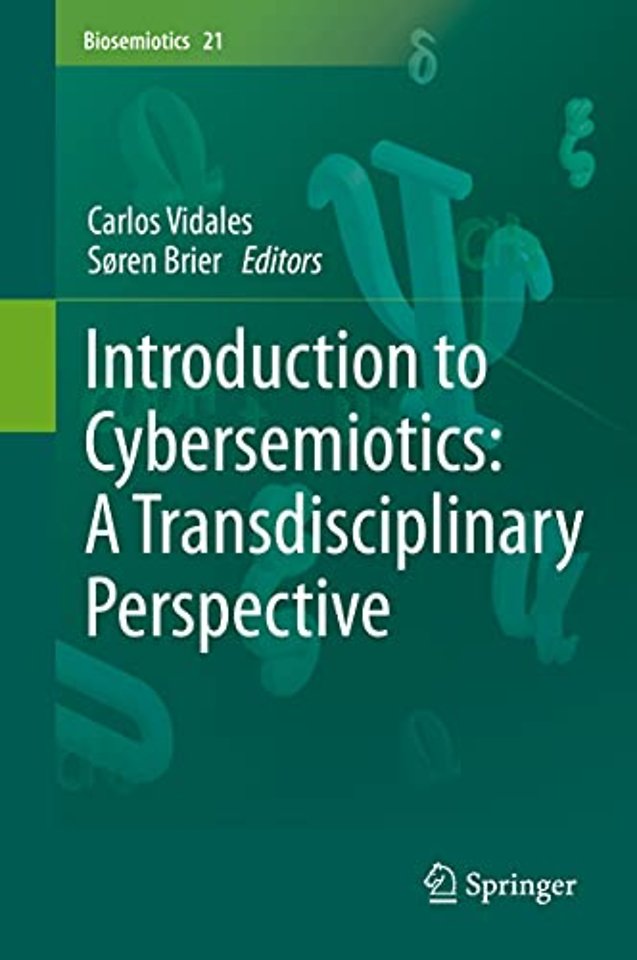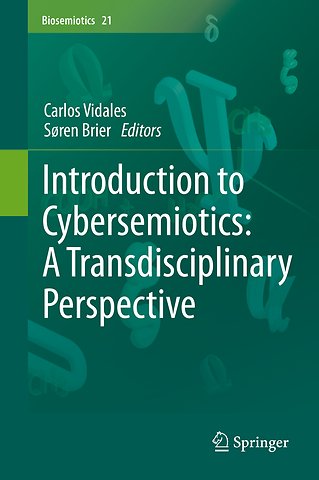Introduction to Cybersemiotics: A Transdisciplinary Perspective
Samenvatting
This book traces the origins and evolution of cybersemiotics, beginning with the integration of semiotics into the theoretical framework of cybernetics and information theory. The book opens with chapters that situate the roots of cybersemiotics in Peircean semiotics, describe the advent of the Information Age and cybernetics, and lay out the proposition that notions of system, communication, self-reference, information, meaning, form, autopoiesis, and self-control are of equal topical interest to semiotics and systems theory.
Subsequent chapters introduce a cybersemiotic viewpoint on the capacity of arts and other practices for knowing. This suggests pathways for developing Practice as Research and practice-led research, and prompts the reader to view this new configuration in cybersemiotic terms. Other contributors discuss cultural and perceptual shifts that lead to interaction with hybrid environments such as Alexa. The relationship of storytelling and cybersemiotics is covered at chapter length, and another chapter describes an individual-collectivity dialectics, in which the latter (Commind) constrains the former (interactants), but the former fuels the latter.
The concluding chapter begins with the observation that digital technologies have infiltrated every corner of the metropolis - homes, workplaces, and places of leisure - to the extent that cities and bodies have transformed into interconnected interfaces. The book challenges the reader to participate in a broader discussion of the potential, limitations, alternatives, and criticisms of cybersemiotics.
Specificaties
Inhoudsopgave
<p>Carlos Vidales and Søren Brier </p>
<p>1. Cybersemiotics in the Information Age</p>
<p>Marcel Danesi </p>
<p>2. Cybersemiotic systemic and semiotical based transdisciplinarity</p>
<p>Søren Brier </p>
<p>3. From semiotics, to cybernetics to cybersemiotics: the question of communication and meaning processes in living systems</p>
<p>Carlos Vidales </p>
<p>4. System, sign, information, and communication in cybersemiotics, systems theory, and Peirce</p>
<p>Winfried Nöth </p>
<p>5. Transdisciplinary Realism</p>
<p>Basarab Nicolescu </p>
<p>6. Practice-led research as knowing: a cybersemiotic overview</p>
<p>Paul Cobley </p>
<p> 7. The blind men and the elephant: Towards an organization of epistemic contexts</p>
<p>Michael Kleineberg </p>
<p>8. Communicology, Cybernetics, and Chiasm: A Synergism of Logic and Semiotic</p>
<p>Richard L. Lanigan </p>
<p>9. The Return of Philosophy: A Systemic Semiotics Approach</p>
<p>Berna Leticia Valle Canales </p>
<p>10. HCI Design and the Cybersemiotic Experience</p>
<p>Claudia Jacques <br><br></p><p>11. The Communication of Form. Why cybersemiotic star is necessary for information studies?</p>
<p>Liqian Zhou </p>
<p>12. From ‘motivation’ to ‘constraints’, from ‘discourse’ to ‘modelling systems’: pushing multimodal discourse analysis towards cybersemiotics</p>
<p>Sara Canizzaro </p>
<p>13. Towards a cybersemiotic philology of Buddhist knowledge forms: How to undo objects and concepts in process-philosophical terms</p>
<p>Alina Therese Lettner </p>
<p>14. Cybersemiotics and Phenomenology: a critical review of the conditions of possibility of “observation” from a Transcendental Semiotics</p>
<p>Julio Horta</p>
<p> 15. Storytelling and Cybersemiotics</p>
<p>David M. Boje </p>
<p>16. Communication and evolution</p>
<p>Vivian Romeu </p>
<p>17. Prolegomena to Cybersemiotic discourse pragmatics. Total human evolutionary cognition and communication </p>
<p>Ole Nedergaard Thomsen </p>
<p>18. The cities and the bodies as cyberinterfaces</p>
<p>Lucia Santaella</p>
<p> </p>

